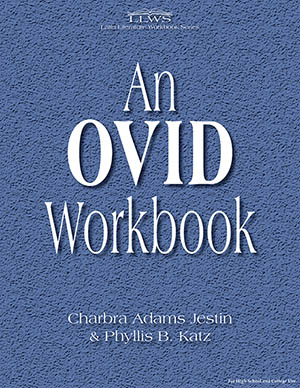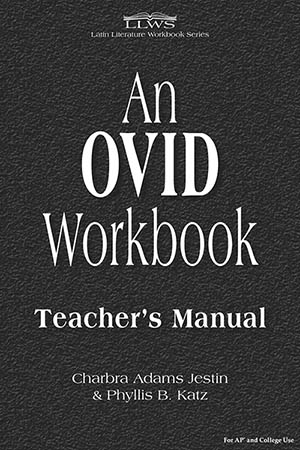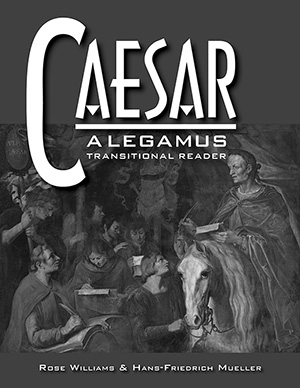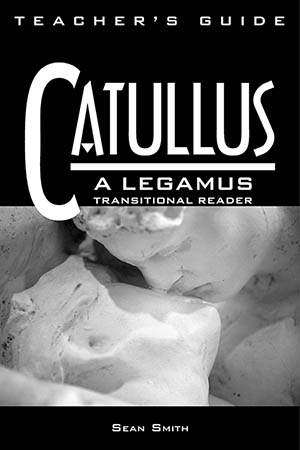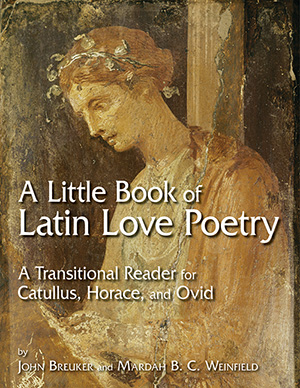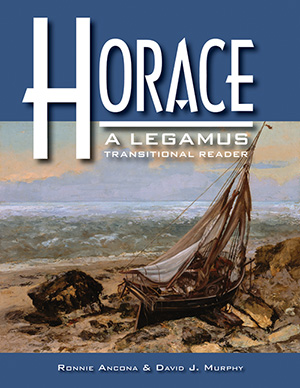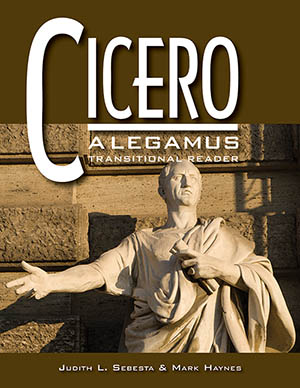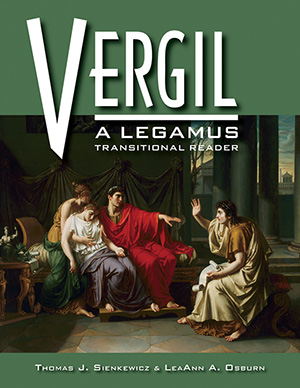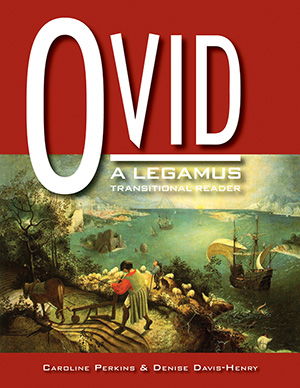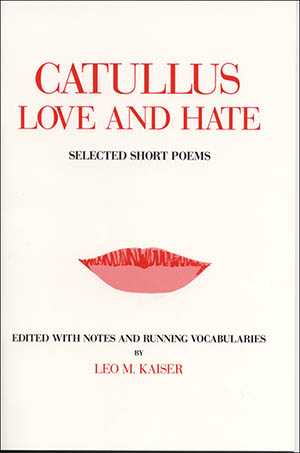This reader contains selections from Catullus, designed for students moving from elementary or intermediate Latin into reading the authentic Latin of Catullus. Passages are accompanied by pre-reading materials, grammatical exercises, complete vocabulary, notes designed for reading comprehension, and other reading aids. Introductory materials (including a section on Catullan meters) and illustrations are included.
Special Features
- pre-reading materials for each passage of Latin, designed to help the student understand the underlying cultural and literary concepts in the Latin passage
- short explanations related to the grammatical and syntactical usages that will be found in the passage, accompanied by exercises
- the first version of the Latin text with gapped words in parentheses and difficult noun-adjective pairings highlighted by the use of a different font
- complete vocabulary and grammatical notes on the page facing the Latin passage. Any vocabulary word found in the passage but not in the notes is found in the downloadable vocabulary document available on this product page in the Digital Content tab
- the second version of the Latin text in its unchanged form
- literary notes on the page facing the unchanged Latin text
- post-reading materials for each passage designed to help the student understand Catullus' style of writing and to allow the student to reflect upon what has been read
- the last four Latin passages do not contain any of the transitional aides such as gapped words or the use of fonts. Notes on grammar, vocabulary, and literary analysis continue to be on the page facing the passage
You can be the first one to write a review.

The Classical Outlook / Fall 2007
Volume 85, Number 1
Review: Catullus: A Legamus Transitional Reader. By KENNETH F. KITCHELL JR. and SEAN SMITH. Wauconda IL: Bolchazy-Carducci, 2006. Pp. xxx and 160. Paper. $29.
This book introduces students to eighteen Catullus poems in an innovative manner and is designed to ready them for a more in-depth study of him in an AP course or at the college level. An introduction to Catullus, a short bibliography, material on meters employed in the text, a grammatical appendix, an introduction to figures of speech, and a pull-out vocabulary are included. A hallmark of the text is all the user-friendly help it provides.
The authors' introduction to Catullus is well written and supplies essential information on his life, times, and poetry, as well as his manuscript tradition, which is unusual for a book of this nature. The bibliography lists seven translations of his poetry and nineteen seminal works for further study~ Metrics are explained in a manner that is easily comprehended by students meeting Catullus for the first time.
The following poems are included in this order: 1, 51, 5, 7, 87, 8, 70, 72, 11, 86, 83, 85, 43, 13, 50, 101, 64 (11. 1-15), 65 (11. 1-14), and 65 (11. 15-24). They deal with the Lesbia affair, Catullus' friends, and snippets of his "poems from the head." In accordance with sound pedagogical principles, each poem is prefaced by a brief introduction that orients the reader to its content and cultural and literary background. Throughout most of the book, there follows a grammar review and exercises that are germane to the poem under study.
The text of more than half of the poems is presented in two versions. One is simplified and is designed to assist the learner's comprehension, the other is the unaltered text. The vocabulary, whose entries are defined in the context of each poem, and the ample notes face the text. Words not found in the facing vocabulary are in the pull-out section at the back of the book. By the time the student gets to the actual poem, she/he should be able to read it with relative ease. Questions designed to help one appreciate Catullus' art and style follow the original text.
The grammatical appendix includes both forms and rules. An especially fine aspect of this section is the grammatical examples based on the poems themselves. The appendix on figures of speech is lucid and also uses examples from the poems. Though it does not include all of the figures encountered, most of the major ones are.
In conclusion, Catullus: A Legamus Transitional Reader is an excellent text that allows students to make a smooth transition from a basic Latin course to reading, interpreting, and appreciating authentic Latin. Its approach is comprehensive, thoughtful, and humane. This is exactly the type of reader needed to encourage students to continue Latin at the upper levels.
DANIEL N. ERICKSON
University of North Dakota
daniel_erickson@und.nodak.edu
by: DANIEL ERICKSON,– University of North Dakota


